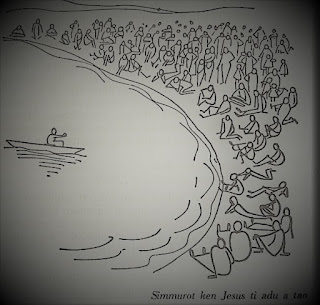A Note on Genealogy (TOLEDOTH)
Archaeology has revealed that
more than 3,000 years prior to the establishment of Israel, the ancient Near
East civilizations maintained their institutions and solidified their identity
through the practice of recording names. For instance, scribes would compile
lists of kings who ruled over a particular kingdom, including the duration of
each king's reign. It is worth noting that some of these recorded reigns are
exceedingly long, with one king even purportedly reigning for 43,200 years!
This extensive duration of rule puts into perspective the biblical figure
Methuselah (mentioned in Genesis 5:27), who is known as the oldest person in
the Bible, having lived for 969 years. In light of the recorded reigns in
ancient Near East civilizations, Methuselah's lifespan appears comparatively
modest.
Literary Purpose
On a literary level,
genealogies play a significant role in the Bible. For example, we encounter the
genealogy (referred to as "toledoth”) of the heavens and the earth in
Genesis 2:4, which marks the beginning of the second creation story. Prior to
the flood, we also find the genealogy of Noah in Genesis 6:9 and the genealogy
of Noah's sons in Genesis 10:1, highlighting the transition and continuity of
generations.
Theological Purpose
On a theological level, genealogies serve the purpose of determining one's identity as an Israelite. They provide answers to the question of who belongs to the chosen people. For instance, we encounter the genealogy of Shem in Genesis 11:10, which leads to the emergence of the descendants of Abraham. Additionally, the genealogy of Terah, Abraham's father, is mentioned in Genesis 11:27. Isaac, too, has his own genealogy in Genesis 25:19, connecting him to Abraham and Jacob, all of whom are heirs to the promises made by the Lord.
Conversely, genealogies are also present for individuals such as Ishmael (Genesis 25:12) and Esau (Genesis 36:1). However, these genealogies serve to distinguish them from belongingness to the chosen people, marking them as separate from the line of promise. It is important to note, however, that despite their distinct genealogies, Ishmael and Esau still receive blessings from God.
In light of these theological considerations, Matthew's decision to begin his gospel with the genealogy of Jesus is significant. It clearly portrays Jesus as a "true Israelite," an heir to the promises and the faith of Israel's ancestors. By tracing Jesus' lineage back to Abraham and emphasizing his connection to the chosen people, Matthew establishes Jesus' rightful place as the fulfillment of the divine promises and the embodiment of Israel's hope.
author: Fr. Randy Flores, SVD
I have also discussed genealogy on my YouTube channel. You can watch it here.



Comments
Post a Comment